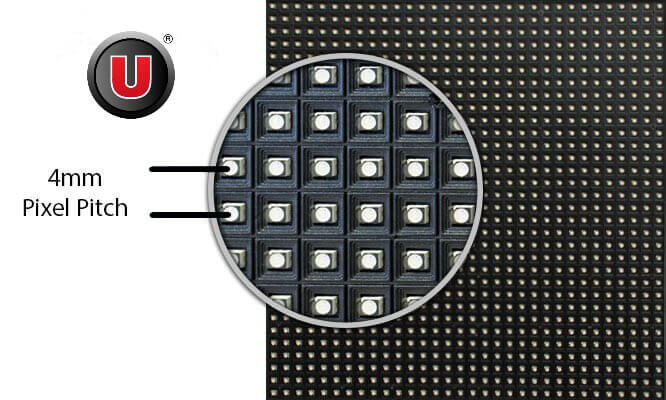
5 Top Reasons to Choose Traditional Signs for Your Business in 2025
As digital banners and LED walls pop up everywhere, owners still ask: do old-school signs matter? The short answer is

Pixel pitch for digital signs, often called “dot pitch,” measures the density of pixels on an LED display by determining the distance between the centers of two adjacent pixels, usually in millimeters. It’s represented as p[mm], for instance, a display with a 4.8mm pitch is denoted as P4.8. It’s the standard method for assessing pixel density on LED screens and video walls. For instance, imagine a large LED screen with a pixel pitch of P3.9, offering crisp and vibrant visuals even at a distance.
Check out our digital signs shop for some options!
Understanding pixel pitch is crucial because it determines the optimal viewing distance for your screen. A smaller pixel pitch indicates a higher pixel density and resolution, resulting in sharper and more detailed images.
The importance of pixel pitch lies in its impact on viewing distance. When the distance between pixels is smaller, viewers can stand closer to the screen and still perceive a clear image. This is because smaller pixel pitch values translate to shorter viewing distances, allowing for an immersive visual experience.
For example, imagine two Digital Signs—one with a pixel pitch of 2mm and another with a pixel pitch of 4mm. The display with the 2mm pixel pitch would offer greater clarity and detail when viewed up close compared to the one with the 4mm pixel pitch.

In essence, pixel pitch determines the optimal viewing distance for a screen, ensuring that viewers can appreciate the full resolution and quality of the displayed content.
Pixel pitch is the distance between the LED clusters that make up a pixel on an LED display. It is related to resolution. Pixel pitch is the distance, usually in millimeters, from the center of one pixel to the center of the next pixel. It is also called pitch or dot pitch.
Since pixel pitch shows how much space there is between two pixels, a smaller pixel pitch means there is less space between pixels. This means that there are more pixels and the screen resolution is much higher.
A smaller pixel pitch always gives a higher resolution, but just like with televisions, costs more. When the pixel pitch is smaller, more LED clusters are needed to make a higher pixel density, meaning more materials and production costs are needed.
Consumers can get the most out of their LED screen if they figure out the best distance from which to view it, and where it will be constructed.
For example, a display with touch-based interactivity will need a low pixel pitch to show sharp images to people close by. On the other hand, an LED screen hung above the audience, like one in an arena, could have a higher pixel pitch and still work. The best example is a sign on a roadway, you can have a higher pixel pitch(10mm), and the digital sign will still look good since the cars are 20+ feet away. This isn’t to say that
The best way to figure out the optimal viewing distance for an LED Digital Sign is the 2x Rule.
This is a shorthand method for calculating an approximate estimate of the Visual Acuity Distance. The calculation is Pixel Pitch x 2 = Approximate Viewing Distance in Feet.

As digital banners and LED walls pop up everywhere, owners still ask: do old-school signs matter? The short answer is

Based on a strong tradition that views the local, visible gathering as the true church, Landmark Baptist Church is a

United Signs has been proudly serving the signage industry for nearly 30 years. United Signs is a national leader in


Thanks for stopping by! We're here to help, please don't hesitate to reach out.